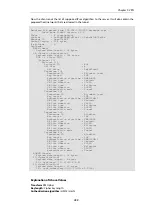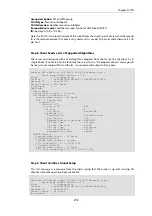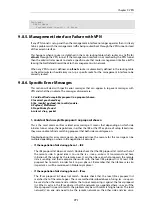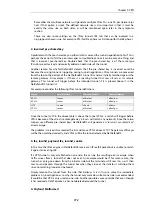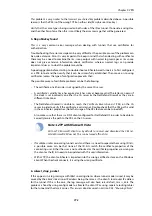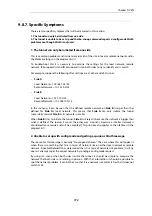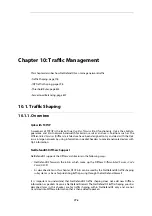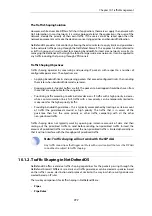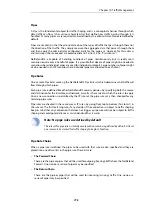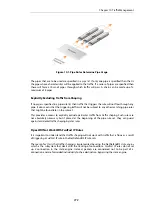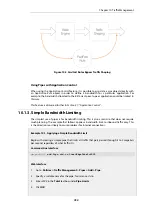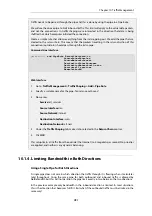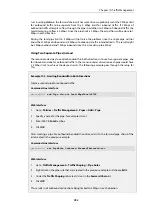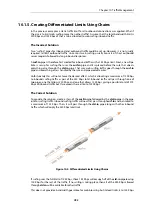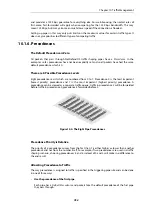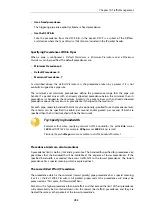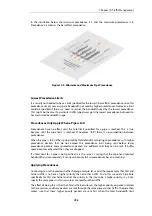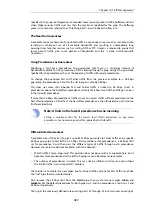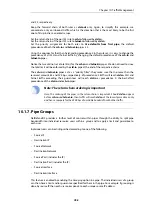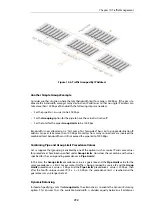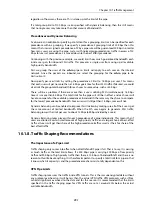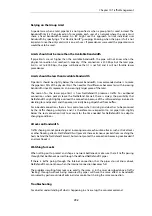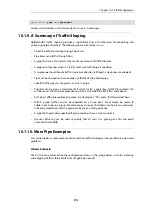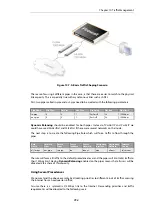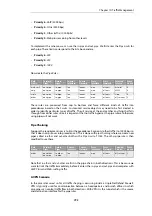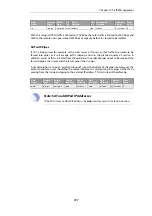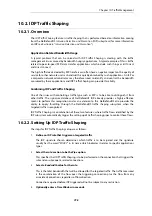
10.1.5. Creating Differentiated Limits Using Chains
In the previous examples a static traffic limit for all outbound connections was applied. What if
the aim is to limit web surfing more than other traffic? Assume that the total bandwidth limit is
250 Kbps and 125 Kbps of that is to be allocated to web surfing inbound traffic.
The Incorrect Solution
Two "surfing" pipes for inbound and outbound traffic could be set up. However, it is not usually
required to limit outbound traffic since most web surfing usually consists of short outbound
server requests followed by long inbound responses.
A surf-in pipe is therefore first created for inbound traffic with a 125 Kbps limit. Next, a new Pipe
Rule is set up for surfing that uses the surf-in pipe and it is placed before the rule that directs
everything else through the std-in pipe. That way web surfing traffic goes through the surf-in
pipe and everything else is handled by the rule and pipe created earlier.
Unfortunately this will not achieve the desired effect, which is allocating a maximum of 125 Kbps
to inbound surfing traffic as part of the 250 Kbps total. Inbound traffic will pass through one of
two pipes: one that allows 250 Kbps, and one that allows 125 Kbps, giving a possible total of 375
Kbps of inbound traffic but this exceeds the real limit of 250 Kbps.
The Correct Solution
To provide the solution, create a
chain
of the surf-in pipe followed by the std-in pipe in the pipe
rule for surfing traffic. Inbound surfing traffic will now first pass through surf-in and be limited to
a maximum of 125 Kbps. Then, it will pass through the std-in pipe along with other inbound
traffic, which will apply the 250 Kbps total limit.
Figure 10.3. Differentiated Limits Using Chains
If surfing uses the full limit of 125 Kbps, those 125 Kbps will occupy half of the std-in pipe leaving
125 Kbps for the rest of the traffic. If no surfing is taking place then all of the 250 Kbps allowed
through std-in will be available for other traffic.
This does not provide a bandwidth guarantee for web browsing but instead limits it to 125 Kbps
Chapter 10: Traffic Management
783
Содержание NetDefendOS
Страница 30: ...Figure 1 3 Packet Flow Schematic Part III Chapter 1 NetDefendOS Overview 30 ...
Страница 32: ...Chapter 1 NetDefendOS Overview 32 ...
Страница 144: ...Chapter 2 Management and Maintenance 144 ...
Страница 220: ... Enable DHCP passthrough Enable L2 passthrough for non IP protocols 4 Click OK Chapter 3 Fundamentals 220 ...
Страница 267: ... SourceNetwork lannet DestinationInterface any DestinationNetwork all nets 4 Click OK Chapter 3 Fundamentals 267 ...
Страница 284: ...Chapter 3 Fundamentals 284 ...
Страница 360: ...The ospf command options are fully described in the separate NetDefendOS CLI Reference Guide Chapter 4 Routing 360 ...
Страница 392: ...Chapter 4 Routing 392 ...
Страница 396: ...Web Interface 1 Go to Network Ethernet If1 2 Select Enable DHCP 3 Click OK Chapter 5 DHCP Services 396 ...
Страница 419: ... Host 2001 DB8 1 MAC 00 90 12 13 14 15 5 Click OK Chapter 5 DHCP Services 419 ...
Страница 420: ...Chapter 5 DHCP Services 420 ...
Страница 424: ...2 Now enter Name lan_Access Action Expect Interface lan Network lannet 3 Click OK Chapter 6 Security Mechanisms 424 ...
Страница 573: ...Chapter 6 Security Mechanisms 573 ...
Страница 575: ...This section describes and provides examples of configuring NAT and SAT rules Chapter 7 Address Translation 575 ...
Страница 607: ...Chapter 7 Address Translation 607 ...
Страница 666: ...Chapter 8 User Authentication 666 ...
Страница 775: ...Chapter 9 VPN 775 ...
Страница 819: ...Chapter 10 Traffic Management 819 ...
Страница 842: ...Chapter 11 High Availability 842 ...
Страница 866: ...Default Enabled Chapter 13 Advanced Settings 866 ...
Страница 879: ...Chapter 13 Advanced Settings 879 ...

